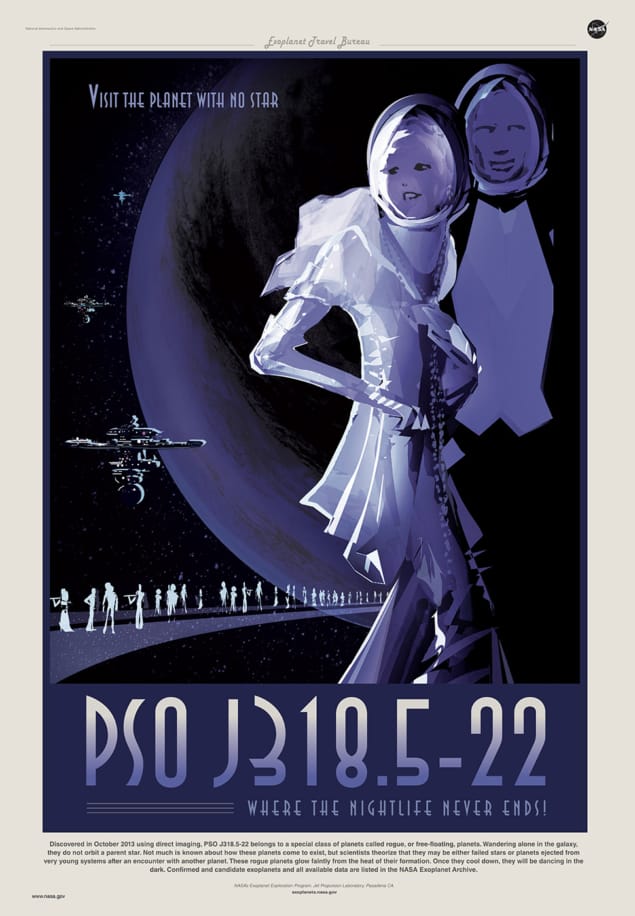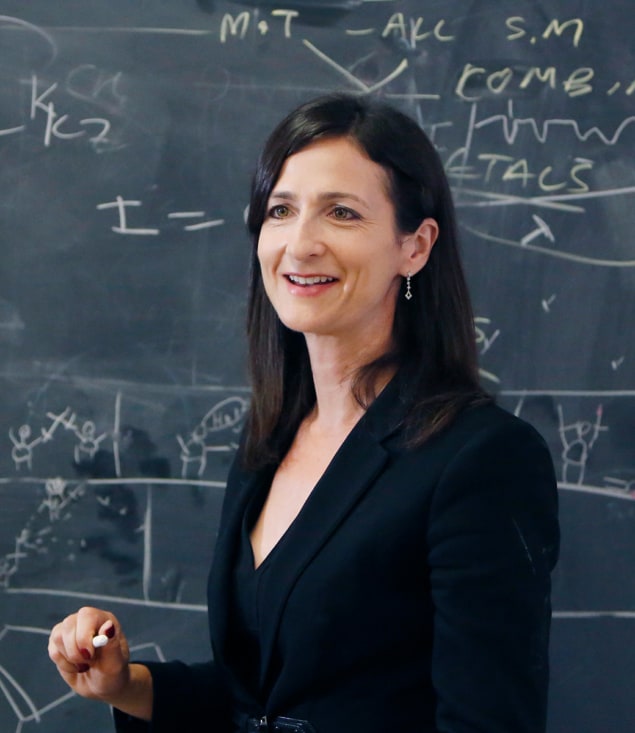Kate Gardner reviews The Smallest Lights in the Universe: a Memoir by Sara Seager

It’s not often I cry when reading a book about physics. Massachusetts Institute of Technology (MIT) planetary scientist Sara Seager’s memoir is a love story, where love comes in multiple forms: romantic love, parental love, friendship, plus love of nature, of the universe and of maths. Those last two are hardly a surprise, coming from a celebrated scientist, but her enthusiasm for her chosen career is especially warm and welcoming. Though it isn’t her excitement about stargazing that provoked my tears.
The Smallest Lights in the Universe: a Memoir opens with Seager recounting a particularly bad day six months after the death of her husband. She was 40 years old, with two young sons, and describes her grief that day as “ugly”. She compares the dark and empty feelings she was going through to the rogue planet PSO J318.5-22 – an exoplanet that isn’t part of a star system, and so is perpetually shrouded in darkness, with a surface covered in molten-iron rain. It’s a powerful description; difficult to visualize and yet brilliantly evoked by Seager.
This narrative pattern of looking at her personal life and her work in parallel to elucidate both is an effective tool that Seager uses repeatedly. Some readers may think this book contains a little too much of the personal, slightly outweighing the physics, but I strongly suspect this is deliberate. Physics is studied by people, and their personal lives have an impact on their work lives. It is valuable to have a renowned scientist acknowledge those links. Between her unconventional childhood and late-in-life diagnosis of autism, Seager knows that she sees the world differently from a lot of people. This has at times made it difficult for her to connect with people, but it has helped her to imagine ways to find and study exoplanets that others didn’t think of, or rejected.
Choosing to study exoplanets in the mid-1990s as a graduate student was an unusual and potentially foolhardy move
Choosing to study exoplanets in the mid-1990s as a graduate student was an unusual and potentially foolhardy move, as it was still an emerging topic scorned by many. Seager trusted her own gut instinct and that of her academic adviser Dimitar Sasselov, ignored the naysayers and set to work on writing computer code to study Hot Jupiters – so-called because these planets are about the same size as Jupiter, but orbit their host stars much more closely. When she defended her PhD thesis in 1999 the 100-seat auditorium at Harvard was packed – exoplanets were still a fringe topic but a fascinating one that was gathering pace.
One of the many ways in which this memoir is unusually honest is that it gets into the nitty gritty of how physics research progresses. Seager talks about the importance of finding the right mentors and collaborators, as well as the different work environments at different institutions. Early in her career, she and some of her close colleagues were sniped to publication or positions in working groups by older, better known scientists (invariably male) and she expresses her anger as well as the lessons she learned. But for the most part she is generous about her colleagues.
According to Seager, astrophysicists need large egos to think themselves capable of understanding the universe, but they also need to accept that their role might be to plant the seed that another future scientist follows to make an important breakthrough. It sounds idealistic, but those are traits that she attributes to her own mentors – particularly John Bahcall, who gave her a job at the Institute for Advanced Study in Princeton early in her career – and tries to cultivate in herself. She was brave and/or lucky to choose a specialism as fast-moving as exoplanets, but she knows that much of what she hopes to see and learn about exoplanets won’t happen in her lifetime.
Perhaps that is why Seager, like many scientists, works on several overlapping projects at a time. Some of them fail or stop getting funding; some move to other institutions or change their focus; some she gets to see to completion. She compares her choice of projects to an investment portfolio: there are the safe bets that can be a little dull; the medium-risk that are more interesting; and the “big swings” that are high in risk and reward.

Just as a successful career can rest on finding colleagues with the right skills who can be trusted, Seager discovers that the same is true outside of work. Until her husband became seriously ill, he was the only person she considered to be her friend. The people she subsequently found through necessity and accident, to help her with practicalities, often became friends in time.
As someone who had always worked long hours of intense concentration, Seager found that grief and sole parenting made her re-evaluate her work–life balance. Her research was still of great importance – indeed, having meaty problems to tackle at work was one of the ways in which she coped with loss – but it could no longer consume all her time and energy. Work travel had to be limited and often combined with family holidays. For the first time in her career, she missed out on being part of a project she had helped to design because she missed a deadline. She had to let that project go and move on, just as she was eventually able to move on from grieving and open herself up to new possibilities.
At the end of The Smallest Lights in the Universe Seager remains enthusiastic and eager to learn more about exoplanets. They are no longer fringe, and her dream of finding a truly Earth-like planet seems entirely possible. But that dream was based in a wish to find extraterrestrial life, which she long ago calculated might be very different from life on Earth, and therefore might not require a planet that is anything like Earth. How do you narrow down what to look for if you don’t know what you’re looking for? It’s a thorny problem that Seager is well placed to solve. Or perhaps she will plant the seed for someone else to solve it many years from now. Maybe she already has.
- 2020 Penguin Random House 320pp $28/£16.99hb



